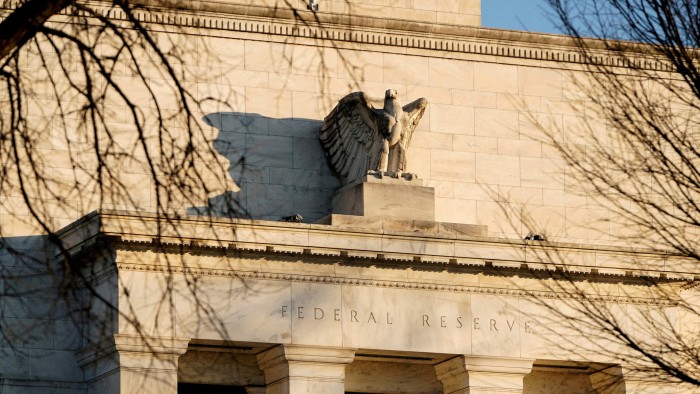Physical Address
304 North Cardinal St.
Dorchester Center, MA 02124
Physical Address
304 North Cardinal St.
Dorchester Center, MA 02124

Unlock Editor’s Digest for free
Roula Khalaf, editor of the FT, picks her favorite stories in this weekly newsletter.
US companies are defaulting on junk loans at the fastest rate in four years, as they struggle to refinance the wave of cheap loans that followed the Covid pandemic.
Non-performing loans in the global leveraged loan market – mostly in the US – rose 7.2 percent in the 12 months to October, as higher interest rates took their toll on heavily indebted businesses, according to a report by Moody’s. . This is the highest rate since late 2020.
The increase in companies struggling to pay back debt contrasts with a much more modest increase in defaulted loans in the high-yield bond market, highlighting how many of corporate America’s riskiest borrowers have gravitated toward the fast-growing debt market.
because Leveraged debt — high-yield bank loans that have been sold to other investors — have floating interest rates Many companies that borrowed during the pandemic when rates were ultra-low have struggled under high borrowing costs in recent years. Many are now showing signs of pain after the Federal Reserve cut rates.
David Mechlin, credit portfolio manager at UBS Asset Management, said, “There was a lot of issuance in a low interest rate environment and time was needed for higher rate pressures to come out. “Here [default trend] May continue till 2025.”
Punitive loan costs, along with lenient covenants, are leading borrowers to look for other ways to extend these loans.
In the U.S., default rates on junk loans hit a decade high, according to Moody’s data. Probability of long stay in rates — d Federal Reserve Last week signaled a slower pace of easing next year – likely to put upward pressure on default rates, analysts say.
Many of these involve defaulting so-called distressed debt exchanges. In such deals, the terms of the loan are changed and the term extended as a way to enable a borrower to avoid bankruptcy, but investors are returned less.
Such deals accounted for more than half of defaults this year, a historic high, according to Ruth Young, head of private market analytics at S&P Global Ratings. “When [a debt exchange] It really impairs the lender to count as a default,” he said.

“Some lower-rated debt-only companies that could not tap the public or private markets had to restructure their debt in 2024, resulting in higher default rates than high-yield bonds,” Moody’s wrote in its report. wrote in the report.
Portfolio managers are concerned that this high default rate is the result of changes in the leveraged loan market in recent years.
Mike Scott, a senior high yield fund manager at Man Group, said, “We’ve had a decade of unadulterated growth in the leveraged loan market. Many new borrowers in sectors such as healthcare and software were relatively light on assets, meaning investors could recover a small portion of their costs in the event of a default, he added.
“[There has been] A vicious combination of lack of growth and lack of resources to recover,” opined Justin McGowan, corporate credit partner at Cheyne Capital.
Despite the rise in defaults, spreads in the high-yield bond market are historically tight, the lowest since 2007, according to Ice BofA data, a sign of investors’ appetite for yield.
“Where the market is right now, we’re pricing in bullishness,” Scott said.
Still, some fund managers think the spike in default rates will be short-lived, as the Fed is now lowering rates. The US central bank cut its benchmark rate for the third consecutive meeting this month.
Brian Barnhurst, global head of credit research at PGIM, said lower borrowing costs should bring relief to companies that had borrowed in debt or high-yield bond markets.
“We don’t see a pick-up in defaults across both asset classes,” he said. “Honestly, that relationship [between leveraged loans and high-yield bond default rates] Probably changed by late 2023.”
But others worry that the acrimonious exchange signals underlying pressure and merely puts off issues until a later date. “[It’s] When that road goes downhill it’s all well and good to kick the can down the road,” noted Duncan Sankey, the chain’s head of credit research, while noting that conditions were more favorable for borrowers.
Some analysts have attributed the rise in distressed exchanges in recent years to the loosening of loan restrictions on loan documentation that hurt lenders.
“You can’t put the genie back in the bottle. weak [documentation] Quality has really changed the landscape, in favor of borrowers,” said S&P’s Young.